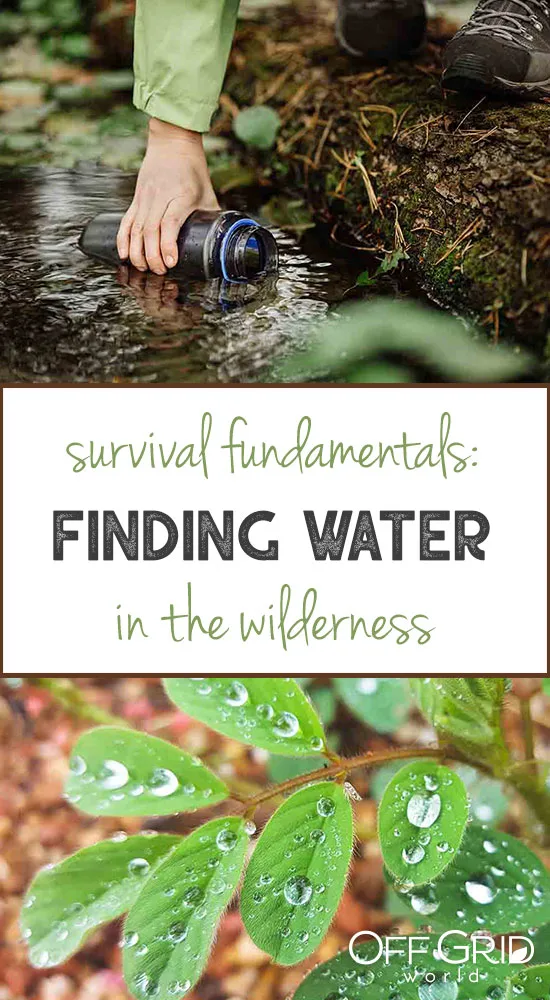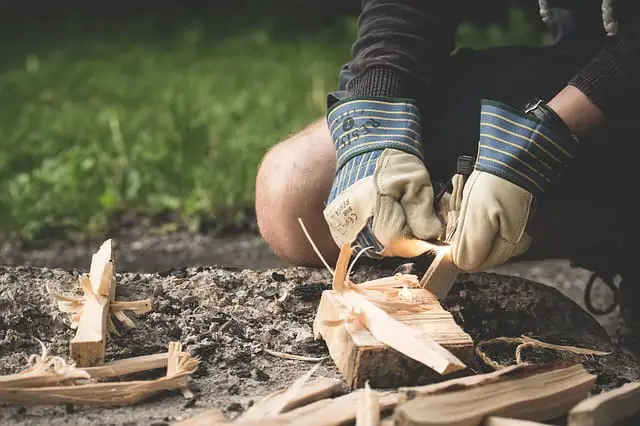Introduction
Whether you’re an avid adventurer or find yourself in an unexpected situation, knowing how to survive in the wilderness with nothing can be a crucial skill. In dire circumstances, having the right mindset and understanding the challenges can mean the difference between life and death.
Surviving in the Wilderness with Nothing: An Essential Guide
Understanding the challenges and mindset required
1. Assess the Situation: Take a moment to evaluate your surroundings, available resources, and any dangers you may face. This will help you prioritize your actions and make informed decisions.
2. Stay Calm and Focused: Maintaining a clear and focused mindset is essential in survival situations. Panic will cloud your judgment, so take deep breaths and focus on the task at hand.
3. Adapt and Improvise: Without any equipment or supplies, you’ll need to get creative. Learn to use natural resources around you for shelter, fire, and food. Look for branches, leaves, and rocks to create a makeshift shelter or use rocks to start a fire.
4. Find Water: Water is a crucial element for survival. Look for natural sources such as streams, rivers, or lakes. If none are available, try collecting morning dew or rainwater using containers or improvised techniques.
5. Prioritize Food: In a survival situation, finding food may be challenging. Look for edible plants, insects, small animals, or fishing opportunities if there are water bodies nearby. Be cautious and avoid anything that you are not familiar with.
6. Signal for Help: If you’re lost or stranded, it’s important to make yourself visible to potential rescuers. Use improvised tools like mirrors, bright clothing, or even smoke from a fire to attract attention.
Remember, survival in the wilderness without any resources is a daunting task. Having knowledge, skills, and the right mindset can greatly increase your chances of making it through. Stay strong, resourceful, and focused on staying alive.

Building Shelter
When finding yourself in the wilderness with no supplies or help, building a shelter becomes crucial for your survival. It provides protection from the elements, keeps you warm, and gives you a sense of security. Here are some important points to consider when building a shelter in the wilderness.
Importance of finding shelter in the wilderness
Finding shelter is an essential survival skill, as exposure to harsh weather conditions can quickly lead to hypothermia or heat exhaustion. By creating a shelter, you provide yourself with a barrier against rain, wind, and extreme temperatures. It also helps to keep insects and wildlife at bay, ensuring your safety and well-being.
Methods of creating a shelter from natural resources
When it comes to building a shelter in the wilderness, utilizing natural resources is key. Here are a few methods you can use:
- Debris shelter: This involves using branches, leaves, and other natural materials to create a makeshift shelter. Find a sturdy tree or rock formation and construct a lean-to structure using branches as support and layering leaves and debris for insulation.
- Rock shelter: If you are in an area with large rocks or caves, these can provide excellent shelter. Look for a suitable location and use rocks and debris to create a semi-enclosed space for protection.
- Tree shelter: Look for a tree with low-hanging, dense branches and create a platform-like structure by intertwining branches. This elevated shelter will keep you off the ground and away from potential dangers.
Tips for maximizing protection and comfort in your shelter
To make your shelter more effective, consider the following tips:
- Clear the area of sharp objects or debris that could compromise the integrity of your shelter.
- Use evergreen boughs or leaves as additional insulation for improved warmth.
- Create a door or entrance that can be sealed off to keep out cold drafts or animals.
- Construct a fire pit near your shelter for warmth and cooking purposes.
- Ensure proper ventilation to prevent condensation and moisture buildup.
Remember, building a shelter in the wilderness is a skill that requires practice. Familiarize yourself with different types of shelters and practice constructing them beforehand, so you are prepared for any survival situation.

Sourcing Food and Water
Locating and procuring water sources in the wilderness
In the wild, finding a reliable water source becomes your top priority for survival. Look for signs of running water such as streams, rivers, or springs. Avoid stagnant water sources as they may be contaminated. If necessary, you can dig a hole in a dry riverbed and wait for water to seep in or collect dew from plants in the morning. Remember to purify any water you find by methods such as boiling, using water filters, or chemical treatment tablets.
Identifying edible plants and insects for sustenance
When it comes to foraging for food, knowledge of edible plants and insects is crucial. Do thorough research before venturing into the wilderness or carry a pocket guide to help you identify safe plants. Look for familiar plants like berries, nuts, and greens. Insects such as ants, crickets, and grasshoppers can also provide a source of protein. Avoid eating anything that you cannot positively identify as safe to consume.
Hunting and trapping techniques for procuring food
If you have no food sources available, you may need to resort to hunting and trapping techniques to procure food. Learn basic hunting skills such as tracking, stalking, and using appropriate weapons like spears or improvised traps. Familiarize yourself with your environment and the habits of local wildlife. Be patient, as hunting can take time and skill. Remember to follow all local laws and regulations regarding hunting and trapping.
Surviving in the wilderness with nothing is a challenging endeavor, but by focusing on sourcing food and water, you can increase your chances of making it through. Remember to stay calm, stay positive, and utilize any resources that nature provides.
Navigation and Signaling
Navigating without a compass or map in the wilderness
Finding yourself in the wilderness with nothing can be a daunting situation. However, there are ways to navigate and find your way back to safety even without a compass or map. Here are a few tips to help you navigate in the wilderness:
- Use landmarks: Pay attention to unique landmarks such as mountain ranges, rivers, or distinct rock formations. Use them as reference points to navigate and retrace your steps.
- Observe the sun: The sun rises in the east and sets in the west. By observing the sun’s movement throughout the day, you can determine your directions. In the northern hemisphere, shadows will be longer in the morning and shorter in the afternoon, giving you an idea of where north is.
- Track the stars: At night, stars can help you determine your directions. Locate Polaris, the North Star, which is always located in the northern celestial hemisphere. By identifying this star, you can find north and navigate accordingly.
Using natural elements and celestial cues to find direction
When you find yourself without any tools in the wilderness, it’s crucial to be resourceful and use natural elements to your advantage. Here are some additional tips to help you find direction:
- Moss on trees: While it’s commonly believed that moss on trees only grows on the north side, this is not always accurate. However, in damp environments, moss tends to grow on the shaded side of trees. This can give you a general idea of where north might be.
- Listen to water: If you come across a stream or river, the sound of rushing water can guide you towards civilization. Follow the water downstream, as it will usually lead to larger bodies of water or human settlements.
- Animal behavior: Observe the behavior of animals around you. Birds tend to fly towards their nests in the evening, which could indicate the direction of nearby human settlements.
Remember, these methods are not foolproof, and it’s always recommended to have proper navigation tools when venturing into the wilderness. However, in a dire situation, these techniques can help you find your way back
